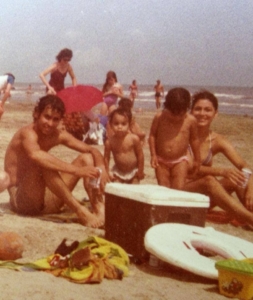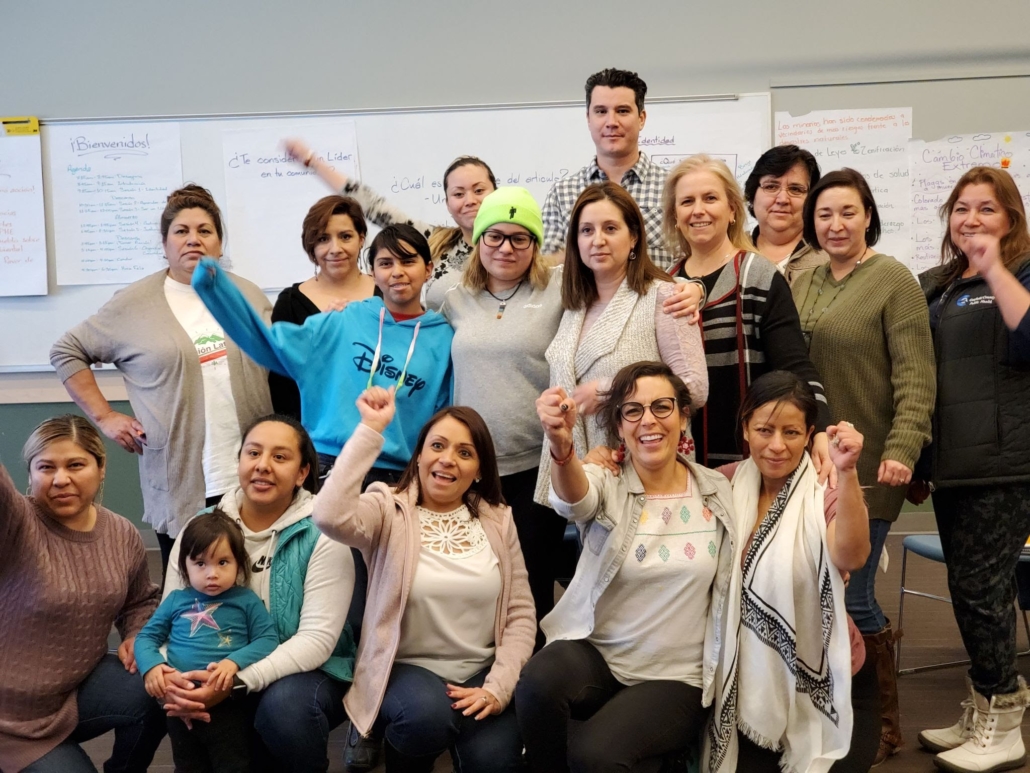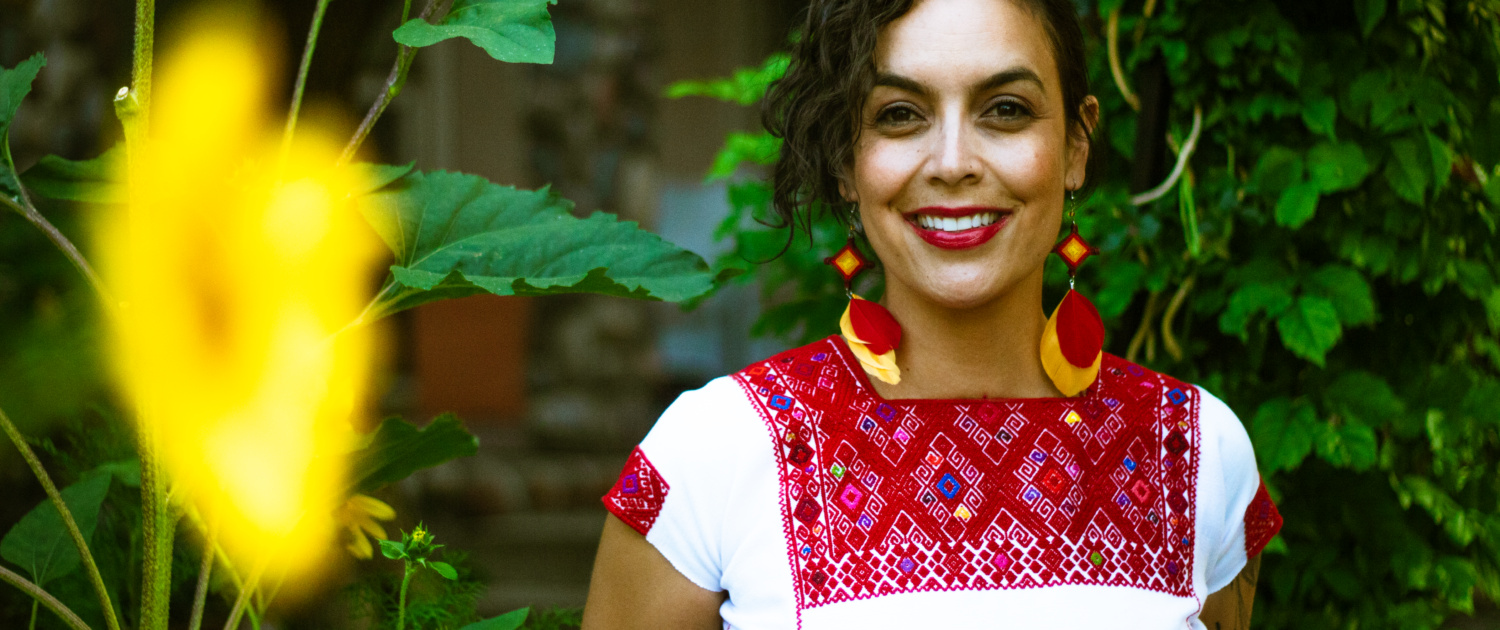Meet our new Protégete director, Beatriz Soto!
We sat down with Beatriz to chat about her story and vision for Protégete, our program to build Latinx environmental leaders across Colorado.
Can you introduce yourself and tell us about your vision when it comes to Colorado’s climate, land, air, water and communities?
My name is Beatriz Soto. I am really excited to be the new director of Protégete at Conservation Colorado. I am the former director of Defiende Nuestra Tierra for the Wilderness Workshop. And before that I was an architect co-designing high-performance sustainable buildings in the Roaring Fork Valley and in Mexico. I co-founded Voces Unidas de las Montañas, the first Latino-created, Latino-led advocacy nonprofit in the central mountain region of Colorado. In 2020, the year I became an American citizen, I ran for Garfield County Commissioner. My passion is to support our Latinx community in building wealth and building power.

Soto ran for Garfield County Commissioner in 2020.
My vision is that community members who represent the diversity of our state are able to come to the decision-making tables, and that we create solutions to address the root causes that led to environmental and climate injustice in the first place: social injustice, racism, and economic injustice. Historically, we’ve been so siloed to not think about how all these different issues intersect, and we tend to create solutions that put more burden on historically excluded communities and continue to perpetuate an unjust society.
As we tackle climate change and protect our water and our lands, we also need to protect all the people that are an integral part of our communities: our workforce, our migrants, our youth and elders, and those who are not from the dominant culture. We need to make sure everybody gets a chance to be a part of the solution and benefit from the solutions that we create.
Can you tell us a little bit about where you come from and how you came to call the mountains of Colorado home?
I grew up in this country as an undocumented child, in a home where we only spoke Spanish. My family, like many others, worked in the construction industry, specifically drywall. Back in the day, my family moved around a lot in search of the American dream. My parents didn’t fit the agriculture workforce profile that would have provided a path to citizenship, and there wasn’t a clear path for undocumented youth in this country. So when I was about 11 we moved back to Mexico. But soon after, my father passed away. It’s amazing how losing one member in your family can really start a spiral back into poverty very quickly. So we had to move back to the United States. And that’s when we found our home in the Roaring Fork Valley.
I graduated from Basalt High School and then went back to Mexico to study architecture, and this journey fostered a strong connection between my dual identities. Even though I was still undocumented at that point, I very much felt like an American. I was always kind of navigating these two worlds that I belong to. So I moved back to the Roaring Fork Valley to work in architecture and sustainable building and eventually became an American citizen.
The central mountains region is definitely the place I want to be to raise my son and the community I want to be a part of. It’s been 22 years now that I’ve been in this area, and I have strong connections to this region and its people.
I absolutely love living in Colorado. I love enjoying every season. I love that it’s so distinct. I love snowboarding and snowshoeing in the winter and even just sliding down a hill on a tube with my 10-year-old. In the summer, I love going to music festivals, being in the park, paddleboarding, and having carnes asadas with my family. Fall hikes are my favorite. I also love the spring, looking at all the wildflowers popping up all over the place. Everywhere I go in the state, I find so many delightful surprises. It’s such a great place to live.
What inspired you to care as deeply as you do about our planet and the environmental threats we face?

Soto recalls an early environmental awakening going to the beach as a child.
I feel like being an environmentalist has just always been part of my culture. Our Communities and Justice Advocate, Jared Bynum, said to me just today, “Everybody is born an environmentalist.” That just resonated with me because I remember going to the ocean as a child, and trash and pollution really bothering me. I remember all my life seeing any type of animal or plant suffer and just feeling that empathy towards every living being.
When I moved to Mexico, in the late 80s and early 90s, I remember everybody had glass containers for sodas and beer that you would keep and then just exchange the liquid. I remember going to the little corner store with my little bag that was reusable, before that was a trend. And I remember I would bring a reusable cloth that my abuela had embroidered to the tortilleria, and they would charge you a little bit more to use paper to wrap your tortillas if you didn’t bring your own cloth. All of these practices made total sense to me. I can’t remember any part of my life without caring about the natural world and the environment.
How do you connect your background in architecture, green building, and sustainable design to your work in advocacy and activism now? What led you from one to the other?
I got into the environmental movement because of my values. But I got into the activism world because of my status as an undocumented immigrant.
In the early 2000s, I was designing green homes. I was winning architecture competitions. But at the same time, there was this other part of my life: I was protesting in Denver for immigration reform. I was going out into the streets and saying, “We’re here, we’re integral parts of this community. We deserve to be acknowledged for what we bring to these communities, and we deserve protection.” So the immigration sphere and Latinx representation is really where my activism started to develop.

Soto and her family marched together with thousands of Latinos in Denver in 2006, protesting national anti-immigrant laws.
When Trump got into office, I think that’s when it really hit me that I needed to use my skillset, my voice, and whatever little privilege I have to do more for my community. With the climate crisis, and seeing the wildfires around the Roaring Fork Valley, seeing that our emergency response is really failing my community, seeing that we’re overdeveloping for the rich in this area, I started to feel like part of the problem and not part of the solution. I almost felt like it’s my redemption to go back to my values, and really do good for my people and for the environment.
What makes the Protégete program unique and what are your hopes for what your Protégete team and communities can accomplish together?
I’ve worked in a lot of spaces, especially in the environmental movement, where I knew I couldn’t come as my full self, where I was the only BIPOC person in the room. Protégete is that space where we are allowed to come as our full selves and advocate for our Mother Earth, to advocate for our culture, to advocate for our traditions that are centered in conservation and environmentalism. And when we’re accepted as we are and we have spaces to truly celebrate and validate our way of viewing the world, we can achieve great things.
The Latinx community is not the historically white environmental audience of this country, but we have a lot of voting power. We’re the fastest growing demographic in this country. Every 30 seconds a Latino turns 18 and is able to vote. Protégete was uniquely created to put our community at the forefront of environmentalism, climate change, and conservation.
Protégete is specifically positioned to help create a statewide environmental movement that is more inclusive and has better representation, a movement that really shares power and understands that all our issues are interconnected. The Latinx community faces many intersectional barriers to participating in our democracy and being at decision-making tables, from language to having available time to economic status. At Protégete we speak the language, we understand the culture, and we have the same lived experiences as many in our communities. We are a part of our Latinx communities, and we have the autonomy to shift the work so it meets people where they are and ensure it prioritizes Latinx-driven climate and environmental solutions.
Can you give us a snapshot into the work that Protegete is doing to engage Latinx communities statewide about their concerns?
Protégete partnered with several other Colorado Latinx-community-focused organizations to hear from community members about their most pressing issues. We’re focusing more on community-driven solutions, where we first connect with impacted communities to understand their situations and come up with solutions together, versus coming in after we’ve figured it out for them. Communities facing environmental and climate injustice live the problems on a daily basis, and they also know the solutions that will better serve them.

Soto joined other Garfield County locals for Latino Advocacy Week in March 2020.
This work will also inform us about what the Latinx community is going through as a whole, and how Latinx priorities overlap with environmental, conservation, and climate issues. For example, this could help us find opportunities for environmental policy to help address housing insecurity, or gentrification. When communities are being forced to be on the outskirts of cities and have long commutes to get to work, that’s adding on to the climate crisis. This is an environmental issue, and there’s an environmental policy solution to keep communities where they are, keep neighborhoods vibrant, reduce commutes, and also help meet transportation and climate goals. Engaging with our communities really gives us a broader perspective on the issues that are connected to environmental injustice and the work Conservation Colorado is prioritizing.
I’m also really hoping to build Protégete at a statewide level, with the understanding that there are Latinx communities all across the state facing unique barriers and struggles. For example, in the San Luis Valley, we have some of the original Latinx families that have been stewards of the land since before Colorado was part of the United States. Latinos in Pueblo are surrounded by superfund sites harming their health. Now, if we go to the northern part of the state, we have a lot of agriculture, ranching, meatpacking plants, and oil and gas territory. The Latinx community there and their environmental priorities are going to look different than the ones in Commerce City and the Denver metro area. And the same goes for communities on the western slope, from Mesa County to the Roaring Fork Valley, from Telluride to Durango. We face different issues, but we all are facing some sort of environmental degradation, and we all should be part of the climate solution.
Finally, how can Conservation Colorado members support the Protégete team and community in your work?
I really want to speak to the broader environmental community, and hope that they can embrace and welcome new voices to the table.
The environmental movement in this country has long had a narrative of protection and conservation for the sake of “nature,” which really ends up being about how primarily white men and the dominant culture think nature should be protected and who benefits from it. We need to shift this narrative and think about how communities and the environment are connected. We’re all in this together. At the end of the day, we’re all trying to achieve thriving communities, a stable future, and beautiful healthy ecosystems that are protected for human well-being and rich biodiversity.
And so I really invite people to educate themselves further on how all these issues are intersectional, broaden their view of the environmental movement, and really start to take in perspectives from the Black community, the Latinx community, Indigenous communities on how we relate to this movement and why environmental protection is so important to all of us. I invite people to follow Protégete on Facebook, participate in our events, and donate to Conservation Colorado to support our work. And let’s share the power.






